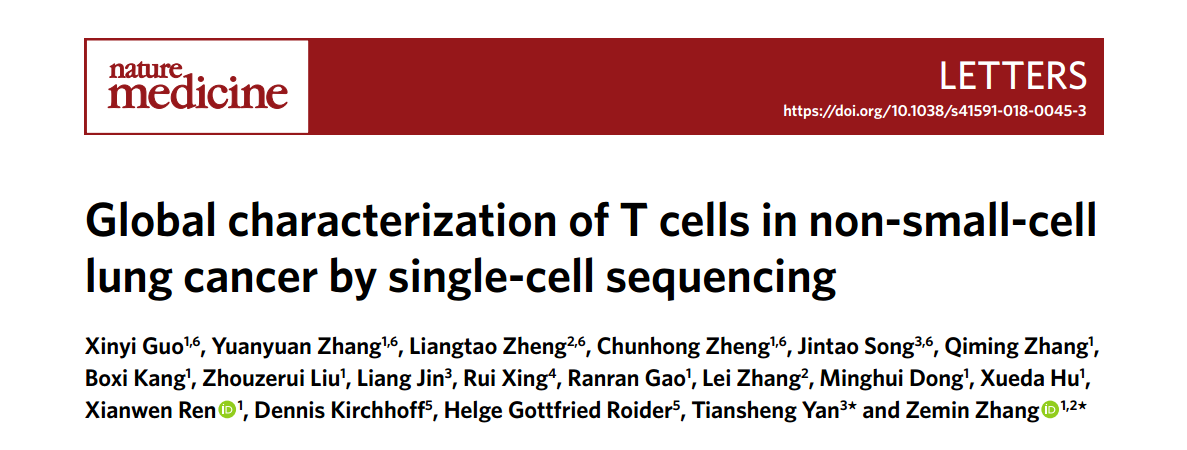肺癌T细胞 scRNAseq 分析
Methods
we performed deep single-cell RNA sequencing on T cells isolated from tumor, adjacent normal tissues and peripheral blood for 14 treatment-naïve patients, including 11 adenocarcinomas and three squamous cell carcinomas
After confirming the existence of T cell infiltration in NSCLC tumors (Supplementary Fig. 1a), we sorted various T cell subtypes based on cell surface markers CD3/ CD4/CD8/CD25 by fluorescence-activated cell sorting
A total of 12,346 cells were sequenced at an average depth of 1.04 million uniquely-mapped read pairs per cell
The final expression table contained 12,415 genes and 11,769 cells
Dimensional reduction analysis (t-SNE) applied to the expression data revealed that T cells clustered primarily based on their tissue origins and subtypes
To further address the intrinsic T cell heterogeneity, we applied unsupervised clustering based on t-SNE+ densityClust and identified seven CD8 and nine CD4 clusters
To gain insight into the clonal relationship among individual T cells, we reconstructed their T cell receptor (TCR) sequences
We obtained full-length TCRs with both alpha and beta chains for 8,038 cells of the 16 clusters, including 5,015 harboring unique TCRs and 3,023 harboring repeated use of TCRs, indicative of clonal expansion
Detection of Treg marker genes
Survival analysis.
Results
- As well as tumor-infiltrating CD8+ T cells undergoing exhaustion, we observed two clusters of cells exhibiting states preceding exhaustion, and a high ratio of “pre-exhausted” to exhausted T cells was associated with better prognosis of lung adenocarcinoma.
we observed further heterogeneity within the tumor regulatory T cells (Tregs), characterized by the bimodal distribution of TNFRSF9, an activation marker for antigenspecific Tregs. The gene signature of those activated tumor Tregs, which included IL1R2, correlated with poor prognosis in lung adenocarcinoma.
…
points
- 通常,CX3CR1在正常组织中表达高于肿瘤组织
